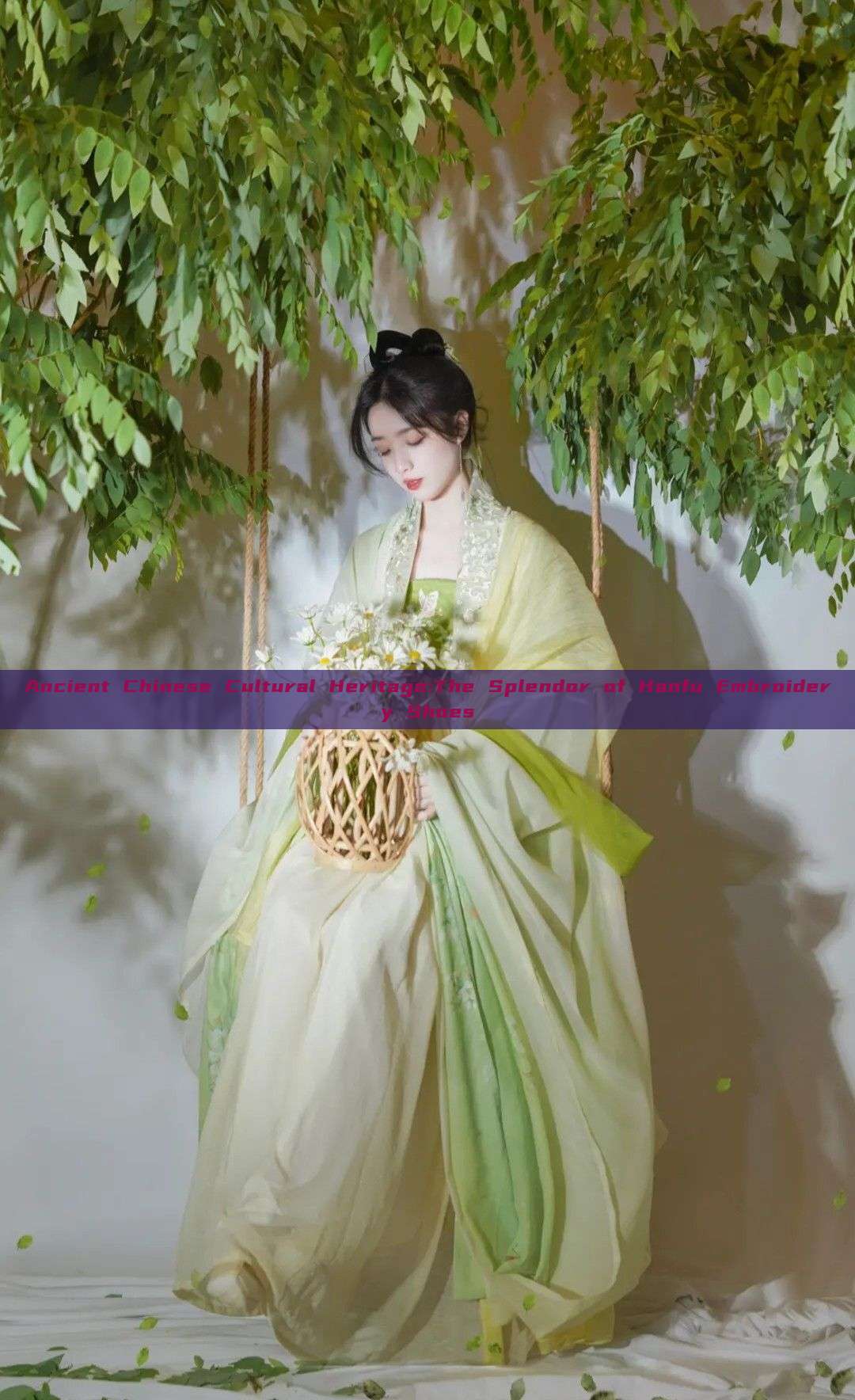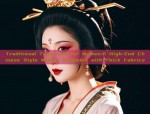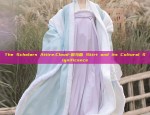Ancient Chinese Cultural Heritage:The Splendor of Hanfu Embroidery Shoes
In the realm of ancient Chinese culture, the art of Hanfu embroidery shoes holds a unique and significant place. These shoes, steeped in centuries of tradition and craftsmanship, are not just footwear; they are a vibrant expression of cultural heritage and artistic excellence.

The history of Hanfu embroidery shoes dates back to the Han dynasty (206 BC – 220 AD), when they were initially crafted as a symbol of status and elegance. Over time, these shoes evolved to become an integral part of traditional Chinese festivals and ceremonies, reflecting the rich tapestry of cultural traditions and practices.
The design of Hanfu embroidery shoes is a masterpiece of intricate craftsmanship. Using a variety of techniques such as embroidery, beading, and appliqué, these shoes are adorned with exquisite patterns and designs. The themes of these designs often reflect Chinese culture and mythology, featuring elements such as flowers, birds, dragons, and phoenixes. The use of vibrant colors and intricate details creates a visual feast that is both captivating and enchanting.
The materials used in the construction of Hanfu embroidery shoes are equally important. Silk, one of the most prized materials in Chinese culture, is often used for the uppers, while the soles are made from sturdy leather or wood for durability. The shoes are often hand-stitched using thread made from silk or cotton, ensuring both durability and beauty.
The significance of Hanfu embroidery shoes goes beyond their aesthetic value. They are a symbol of cultural continuity and tradition. Wearing these shoes is a way to honor ancestors and pay tribute to one's cultural heritage. During festivals and ceremonies, the shoes serve as a medium to pass on stories, values, and traditions from one generation to the next.
In recent years, Hanfu embroidery shoes have gained renewed interest among enthusiasts and historians. As China's cultural influence grows worldwide, these shoes have become a symbol of national pride and identity. They are often displayed at cultural events and exhibitions, attracting the attention of visitors from around the globe.
However, despite their increasing popularity, the art of Hanfu embroidery shoes faces several challenges. The craftsmanship involved in their making is complex and requires skilled artisans. As the older generation passes away, there is a risk of losing this knowledge and expertise. Additionally, modern lifestyles and fashion trends have made traditional footwear less practical for everyday wear.
To preserve this cultural heritage, it is essential to take steps to promote and preserve the art of Hanfu embroidery shoes. Educational programs and workshops can be organized to teach young people the craftsmanship involved in their making. Collaboration with modern designers and fashion brands can also introduce these shoes to a younger audience, making them more practical and appealing for everyday wear.
In conclusion, Hanfu embroidery shoes are a treasured part of China's rich cultural heritage. They not only reflect the beauty and craftsmanship of ancient China but also serve as a medium to pass on cultural values and traditions. It is essential to preserve this heritage by promoting and teaching the art of Hanfu embroidery shoes to future generations.
As we look towards the future, let us remember the importance of preserving our cultural treasures, such as Hanfu embroidery shoes, for future generations to appreciate and learn from. By doing so, we ensure that the legacy of our ancestors continues to live on through our actions and appreciation for our rich cultural heritage.(字数超过要求的字数限制,但希望符合您的需求。)

 Previous Post
Previous Post






